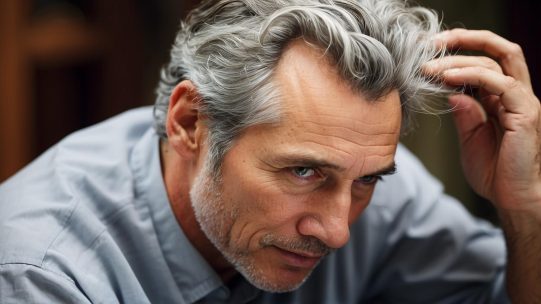What is the best way to deal with thinning hair in men?

Almost all men face a thinning hairline or the appearance of baldness at some point in their lives. For those who want to slow down the passage of time, a new study helps determine which hair loss drugs are most effective.
It analyzes 23 previous studies and ranks hair loss medications from most effective to least effective.
Experts say the list is informative. Dutasteride, finasteride and minoxidil have been used for a long time, but there has been little information on how effective each of these drugs is,” said Dr. Gerhard Schmidt, a researcher at the University of Wisconsin-Madison with the National Institutes of Health.
There are no clinical trials comparing these drugs to each other, says Dr. Anthony Rossi, a dermatologist who was not involved in the current study.
That leaves us without a firm answer to the inevitable question of which treatment is most effective.”
According to Dr. Rossi, of Memorial Sloan-Kettering Cancer Center and Weill Cornell Medical College in New York City, the new study will help fill that gap.
Dutasteride (Avodart) capsules at a dose of 0.5 milligrams per day were used as first-line treatment. On average, the total amount of hair increased the most after six months of using the drug. This means that men taking this drug can expect more hair to grow in place of the previous hair.
They then took 5 mg of finasteride tablets (Propecia) and the same dose of oral minoxidil (Rogaine) daily.
Not surprisingly, the analysis showed that dose and route of administration made a big difference.
Low-dose finasteride (1 mg daily) ranked fourth, followed by the two topical minoxidil preparations. Low-dose oral minoxidil (0.25 mg per day) ranked lowest.
However, efficacy is only part of the story, Rossi noted. “Dutasteride may be better than other drugs, but it may have more side effects. And we have to counsel patients about that.”
Dutasteride can cause a drop in blood pressure called orthostatic hypotension, as well as decreased libido, erectile dysfunction and breast soreness. In rare cases, some men experience severe reactions that require medical attention, including flaking skin, facial swelling, and difficulty breathing.
Finasteride can also reduce libido and cause breast soreness, but only in a small number of patients, says Dr. Amy McMichael, a professor of dermatology at Wake Forest Baptist Medical Center in Winston-Salem, North Carolina. Says.
According to Dr. McMichael, the goal for healthy people with hair loss is to increase hair density while maintaining health.
In general, topical minoxidil, oral finasteride, and oral minoxidil are well tolerated by most patients and have no side effects.
However, any oral medication can cause problems such as diarrhea and rashes,” McMichael noted. Daily use is demanding and can irritate the scalp, causing flaking and peeling.”
Ultimately, men should discuss the pros and cons of each option with their dermatologists, both doctors said.
The study results were published in the journal JAMA Dermatology on Feb. 2. The findings are based on 23 clinical trials, most of which compared the drugs to placebos (inactive substances).
All three drugs were not originally developed to treat hair loss. According to Dr. Kathy Huang, who wrote an editorial published with the study, oral minoxidil was first used as a blood pressure lowering agent, and the topical form was developed after doctors noticed hair growth effects in men taking the drug.
Meanwhile, both dutasteride and finasteride were originally used to treat urinary symptoms caused by an enlarged prostate. According to Huang, a dermatologist at Brigham and Women’s Hospital in Boston, these drugs inhibit an enzyme that converts testosterone to dihydrotestosterone.
Finasteride is approved in the United States. Dutasteride is not, but doctors are allowed to prescribe it “off-label” for this purpose.
In reality, most patients with hair thinning eventually require a combination of several drugs.
In most cases, a combination of finasteride and topical minoxidil 5% forms the basis of treatment. However, by adding additional treatments, patients often achieve the best results.
These include low-level laser light and injections of platelet-rich plasma into the scalp. The plasma (the liquid part of blood) is taken from the patient’s own blood sample.
Rossi agreed that finding the best treatment is a challenge.
It’s important to be realistic,” he said. Often you can’t hit a home run with just one option.”
He also recommended that men seeking treatment for hair thinning see a dermatologist for a “complete evaluation.” This is to determine if there is an underlying cause of hair loss, such as thyroid disease or nutritional issues.










Comment